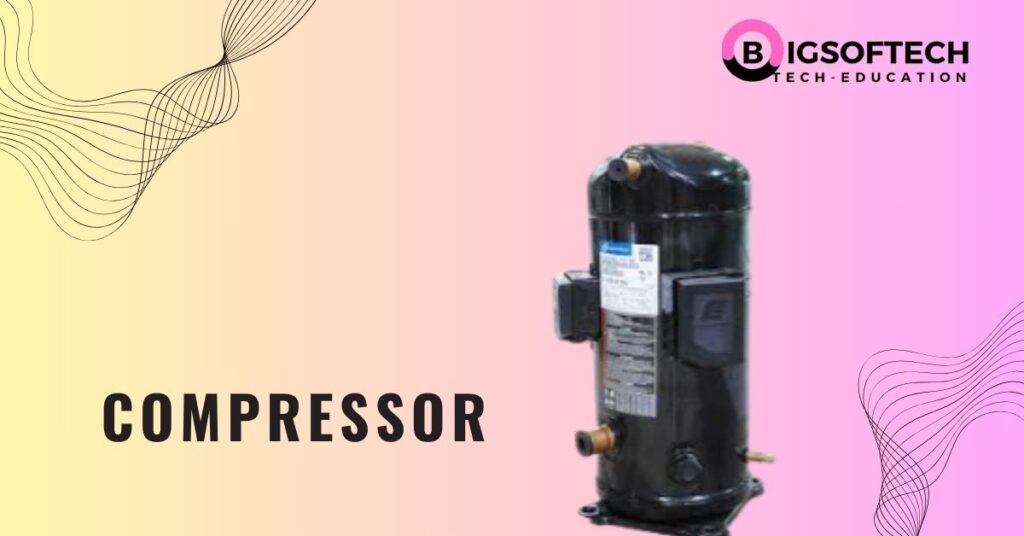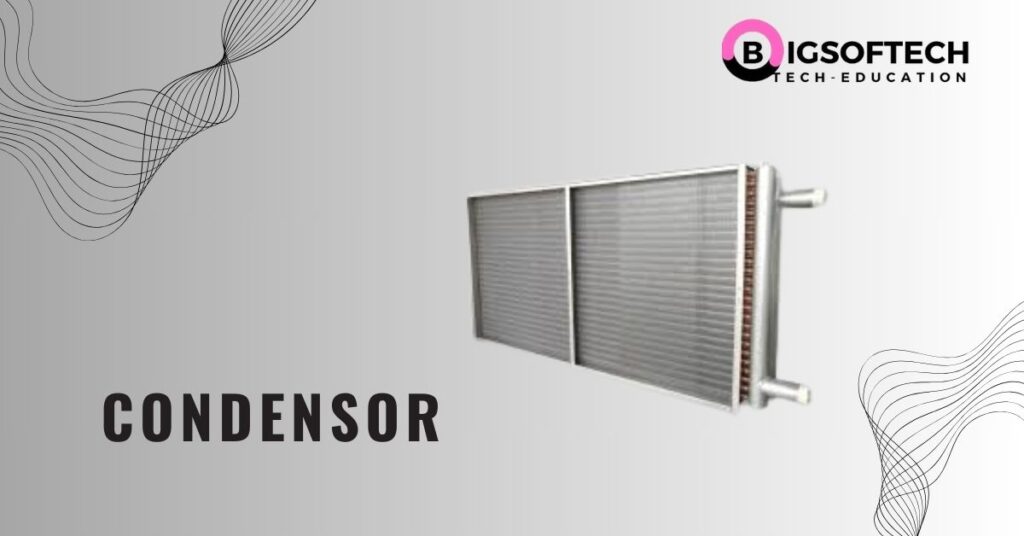In the dynamic world of refrigeration and air conditioning, where accuracy and efficiency are important, the Thermostatic Expansion Valve (TXV) stands as a critical component, arranging the delicate balance of refrigerant flow within a system. As technology continues to evolve, the demand for optimized cooling and heating systems has never been higher, forcing the TXV into the spotlight for its focal role in maintaining temperature control and energy efficiency.
In this article, you will get more beneficial knowledge about the Thermostatic Expansion Valve. From its fundamental principles to advanced applications, we embark on a journey to understand how this seemingly modest device plays a key role in ensuring the seamless operation of diverse refrigeration and air conditioning systems.
What is Thermostatic Expansion Valve (TXV)
The Thermostatic Expansion Valve (TXV) is a crucial component in refrigeration and air conditioning systems designed to regulate and control the flow of refrigerant into the evaporator coil. It operates based on temperature sensing principles, ensuring optimal system performance by adjusting the amount of refrigerant that enters the evaporator, thereby controlling the superheat—the temperature of the refrigerant vapor leaving the evaporator.
The TXV consists of key components such as a sensing bulb, capillary tube, diaphragm, and valve assembly, working in conjunction to respond to temperature changes in the system. This precision in refrigerant flow regulation allows the TXV to maintain consistent and efficient cooling or heating processes, making it an essential part of HVAC (Heating, Ventilation, and Air Conditioning) and refrigeration systems
Importance in Refrigeration and Air Conditioning Systems
The Thermostatic Expansion Valve (TXV) plays a crucial role in the efficiency and effectiveness of refrigeration and air conditioning systems. Here are some key reasons highlighting the importance of TXV in these systems:
1. Controlled Refrigerant Flow
The TXV regulates the flow of refrigerant into the evaporator coil based on the temperature and pressure conditions. This ensures that the right amount of refrigerant is supplied to the evaporator, preventing issues such as flooding or starving. Proper control of refrigerant flow helps maintain optimal system performance.
3. Optimized System Efficiency
By adjusting the refrigerant flow in response to the load and temperature conditions, the TXV helps optimize the efficiency of the entire system. This is particularly important in achieving and maintaining the desired cooling or heating capacity while minimizing energy consumption.
3. Superheat Regulation:
The Thermostatic Expansion Valve is designed to maintain a specific level of superheat in the evaporator coil. Superheat is the difference between the actual temperature of the refrigerant vapor and its saturation temperature at a given pressure. Controlling superheat helps prevent liquid refrigerant from entering the compressor, ensuring it operates at peak efficiency and longevity.
4. Stable Evaporator Operation
The TXV ensures stable and efficient operation of the evaporator by preventing excessive refrigerant from entering the coil. This is crucial for maintaining proper heat absorption and achieving the desired cooling effect in air conditioning and refrigeration applications.
5. Adaptability to Changing Conditions
Refrigeration and air conditioning systems often experience varying loads and operating conditions. The TXV is designed to adapt to these changes by adjusting the refrigerant flow accordingly. This adaptability is essential for maintaining consistent performance in different environmental conditions.
6. Prevention of Liquid Slugging
Liquid slugging, where liquid refrigerant enters the compressor, can cause damage to the compressor components. The TXV helps prevent this by ensuring that only vaporized refrigerant enters the compressor, protecting it from potential damage, and improving overall system reliability.
7. Improved Temperature Control
The TXV contributes to precise temperature control in the conditioned space by regulating the amount of refrigerant entering the evaporator. This is essential for maintaining comfort conditions in air conditioning applications and preserving the integrity of goods in refrigeration systems.
Purpose of Controlling Refrigerant Flow
The purpose of controlling refrigerant flow in a refrigeration system is crucial for ensuring efficient and effective operation. Controlling the flow of refrigerant serves several key purposes:
1. Temperature Control
Evaporator Regulation
By controlling the amount of refrigerant entering the evaporator, the system can maintain the desired temperature in the refrigerated space. This is essential for preserving the quality of stored goods and ensuring optimal conditions for various industrial processes.
2. Pressure Control
Condenser Regulation
Managing the flow of refrigerant to the condenser helps control the pressure in this part of the system. This is important for maintaining the refrigerant in its liquid state, which is necessary for efficient heat rejection during the condensation process.
3. Energy Efficiency
Optimizing Heat Exchange:
By regulating the refrigerant flow, the system can optimize heat exchange in both the evaporator and condenser. This ensures that the system operates at its highest efficiency, minimizing energy consumption and operating costs.
4. Preventing Flood back
Avoiding Liquid Refrigerant in the Compressor:
Uncontrolled or excessive refrigerant flow can lead to liquid refrigerant entering the compressor. This phenomenon, known as floodback, can cause damage to the compressor and reduce its efficiency. Proper flow control helps prevent this issue.
Preventing Surging
Proper flow control helps prevent surging in the system, which can lead to fluctuations in temperature and pressure. Maintaining stability is crucial for the consistent and reliable operation of the refrigeration system.
Basic Principles of Thermostatic Expansion Valve
The basic principles of a thermostatic expansion valve involve its design and operation to ensure optimal system performance. Here are the key principles:
1. Temperature Sensing
The TXV incorporates a temperature-sensing element, typically a bulb filled with a volatile
fluid connected to the suction line or evaporator outlet. This element senses the temperature of
The refrigerant leaving the evaporator.
2. Pressure Drop
The TXV creates a pressure drop across itself, allowing the high-pressure liquid refrigerant from the condenser to expand and enter the evaporator at a lower pressure. This pressure drop is essential for the refrigerant to absorb heat and evaporate in the evaporator coil.
3. Superheat Control
The main function of the TXV is to control the superheat of the refrigerant vapor leaving the evaporator. Superheat is the temperature difference between the actual vapor temperature and the saturation temperature corresponding to the evaporator pressure. The TXV adjusts the refrigerant flow to maintain the desired superheat level.
4. Balancing Force
The thermostatic expansion valve operates based on the balance between opposing forces. The pressure from the refrigerant entering the valve (high side) pushes against a diaphragm, while the pressure from the temperature-sensing bulb (low side) exerts an opposing force. The valve modulates the flow to maintain equilibrium.
5. Adjustable Opening
TXVs are designed to have an adjustable opening, allowing for manual adjustment or external control based on system requirements. This adjustability is crucial for optimizing system performance under various operating conditions.
6. System Stability
The TXV contributes to system stability by preventing excessive refrigerant flow that could lead to issues like compressor damage or inefficient heat exchange. It helps maintain a balance between the evaporator and the rest of the system.
The Key Components of a Typical TXV:
- Bulb and Capillary Tube
- Bulb: The temperature-sensing element of the TXV. It is filled with a volatile fluid that expands and contracts based on the temperature of the refrigerant leaving the evaporator.
- Capillary Tube: Connects the bulb to the diaphragm housing and allows the volatile fluid to transfer temperature information to the diaphragm.
- Diaphragm and Spring Assembly
- Diaphragm: A flexible membrane that separates the high-pressure side from the low-pressure side. It moves in response to pressure changes to control the opening of the valve.
• Spring: Provides an opposing force to the pressure on the diaphragm. The balance between the spring force and the refrigerant pressure determines the valve opening.
- Valve Body
- Inlet and Outlet Ports: Where the high-pressure liquid refrigerant enters the valve and the regulated flow exits towards the evaporator coil.
• Adjustment Mechanism: Allows for manual or external adjustment to set the desired superheat level.
- Needle and Seat
- Needle: A movable valve component that adjusts the size of the opening through which refrigerant flows. It is connected to the diaphragm.
• Seat: A fixed component against which the needle seals to control the refrigerant flow rate.
- Equalizer Tube
- Connects the evaporator outlet to the diaphragm housing, providing a pressure reference from the low-pressure side to the diaphragm.
Types of Thermostatic Expansion Valves
Thermostatic Expansion Valves (TXVs) come in various types and configurations to suit different applications and system requirements. The primary types of thermostatic expansion valves include:
1. Externally Equalized Thermostatic Expansion Valve
- In this type, the external equalizer is connected to a specific point in the system where pressure needs to be sensed. This enhances the responsiveness of the valve to changes in the evaporator outlet pressure, ensuring precise control over the refrigerant flow.
2. Internally Equalized Thermostatic Expansion Valve
- Internally equalized TXVs do not have an external equalizer line. Instead, they rely on an internal connection between the diaphragm housing and the evaporator outlet. While generally less responsive than externally equalized valves, they are simpler in design and may be suitable for certain applications.
3. Balanced Port Thermostatic Expansion Valve
- This type of TXV is designed to have a balanced port configuration, meaning that the pressure acting on the diaphragm is balanced by pressure on both sides of the needle. This balance helps maintain stable operation under varying conditions.
4. Non-Balanced PortThermostatic Expansion Valve
- In contrast to balanced port TXVs, non-balanced port valves do not have pressure-balancing features. They may be simpler in design but can be more sensitive to changes in operating conditions.
5. Pilot-operated Thermostatic Expansion Valve
- Pilot-operated TXVs use a pilot valve to control the main valve. The pilot valve responds to the pressure differential across the main valve, modulating the refrigerant flow. This design is often used in larger systems where precise control is critical.
6. Bi-Flow Thermostatic Expansion Valve
- Bi-flow TXVs handle refrigerant flow in both directions, making them suitable for heat pump applications where the system can change the direction of refrigerant flow based on whether it is in cooling or heating mode, thereby enhancing system efficiency and superheat.
7. Adjustable Thermostatic Expansion Valve
- Adjustable TXVs have an adjustment mechanism that allows for manual or external adjustment of the valve opening. This is crucial for setting the desired superheat level based on system requirements.
- Fixed Orifice Thermostatic Expansion Valve
- Some TXVs have a fixed orifice, meaning that the opening size is set during manufacturing and cannot be adjusted in the field. These valves are simpler but may be less flexible in certain applications
Troubleshooting and Maintenance of Thermostatic Expansion Valve
-
Insufficient Cooling or Heating
Possible Causes
• TXV may be clogged with debris.
• Bulb not properly attached or damaged.
Troubleshooting Steps:
Check and adjust the superheat setting, inspect the TXV for any visible signs of clogging or debris, and ensure the bulb is properly attached and in good condition.
-
Excessive Superheat
Possible Causes
• The bulb is not properly insulated.
Troubleshooting Steps:
• Check the refrigerant charge and adjust if necessary.
• Insulate the bulb to ensure accurate temperature sensing.
-
Insufficient Superheat
Possible Causes
• TXV may be overcharged.
• Bulb may be exposed to excess airflow.
Troubleshooting Steps
• Check the refrigerant charge and adjust if necessary.
• Ensure the bulb is shielded from direct airflow.
-
System Short Cycling
Possible Causes
• Bulb not properly positioned or damaged.
Troubleshooting Steps:
• Adjust the superheat setting.
• Inspect and reposition or replace the bulb if necessary.
-
Frost or Ice Formation
Possible Causes
• TXV may be overfeeding refrigerant.
• Bulb may be incorrectly positioned.
Troubleshooting Steps:
• Adjust the superheat setting to prevent overfeeding.
• Ensure the bulb is correctly positioned and making proper contact.
Maintenance:
-
Regular Inspection
- Periodically inspect the TXV for any signs of wear, corrosion, or damage.
• Check for refrigerant leaks around the valve and its connections.
-
Bulb Maintenance
- Ensure the temperature-sensing bulb is clean and free of contaminants.
• Check the insulation around the bulb and replace if damaged.
-
Adjustment Verification
- Periodically verify that the superheat setting is within the manufacturer’s recommended range.
• Adjust the TXV as needed based on changes in system conditions.
-
Cleaning
- Clean the valve and its components if there is evidence of debris or clogging.
• Use appropriate cleaning agents or methods recommended by the manufacturer.
-
External Equalizer Line Inspection
- If the TXV has an external equalizer line, inspect it for any signs of damage or blockages.
• Ensure the equalizer line is properly connected and functioning.
Applications of Thermostatic Expansion Valves in Different Systems
- Air Conditioning Systems
TXVs are commonly used in residential air conditioning systems to regulate the flow of refrigerant into the evaporator coil. This ensures efficient cooling and humidity control.
• Commercial Air Conditioning Units: Larger air conditioning systems, such as those used in commercial buildings, also benefit from TXVs for their ability to provide precise superheat control.
- Refrigeration Systems
TXVs regulate refrigerant flow and maintain optimal temperatures for food storage and preservation in walk-in coolers, freezers, and display cases.
In industrial refrigeration systems, including those in food processing plants and cold storage warehouses, TXVs control superheat and enhance system efficiency.
-
Heat Pump Systems
Heat pump systems, which provide both heating and cooling, utilize TXVs to control the flow of refrigerant in both modes. Bi-flow TXVs are often employed to handle reversible refrigerant flow.
-
Chillers
TXVs play a role in water-cooled chiller systems, where they regulate the flow of refrigerant to the evaporator to achieve efficient heat exchange for cooling water.
5. Process Cooling Systems
- Industrial Process Cooling: In various industrial applications requiring precise temperature control, TXVs contribute to maintaining optimal cooling conditions.
Conclusion
In conclusion, the Thermostatic Expansion Valve (TXV) is a vital component in refrigeration and air conditioning systems, offering precise control over the flow of refrigerant to optimize system efficiency and performance. The key features and benefits of TXVs contribute significantly to the overall functionality of diverse applications




